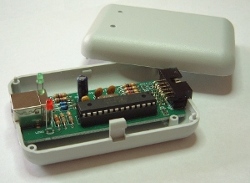PA3040
Advanced Member level 3
Dear All,
Please guide me what is the different between AVR and ATmega both in the Atmel Domain
what is the most fames Atmel MCU number in the above, like 16f877a in microchips. it has lot of web tutorials
Thanks in advance
Please guide me what is the different between AVR and ATmega both in the Atmel Domain
what is the most fames Atmel MCU number in the above, like 16f877a in microchips. it has lot of web tutorials
Thanks in advance



